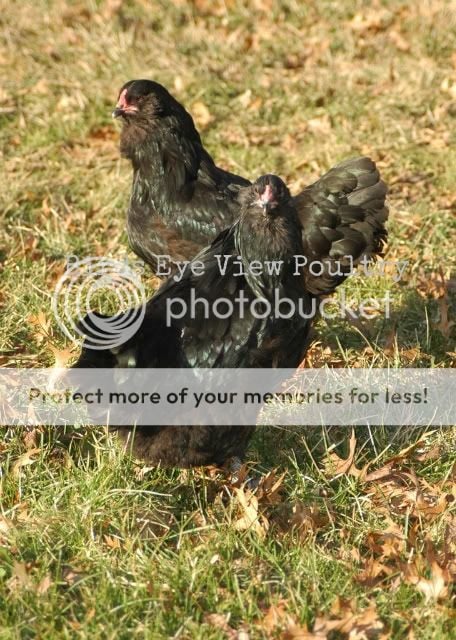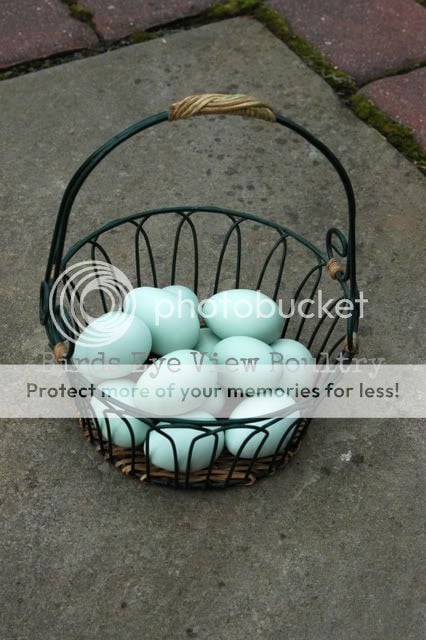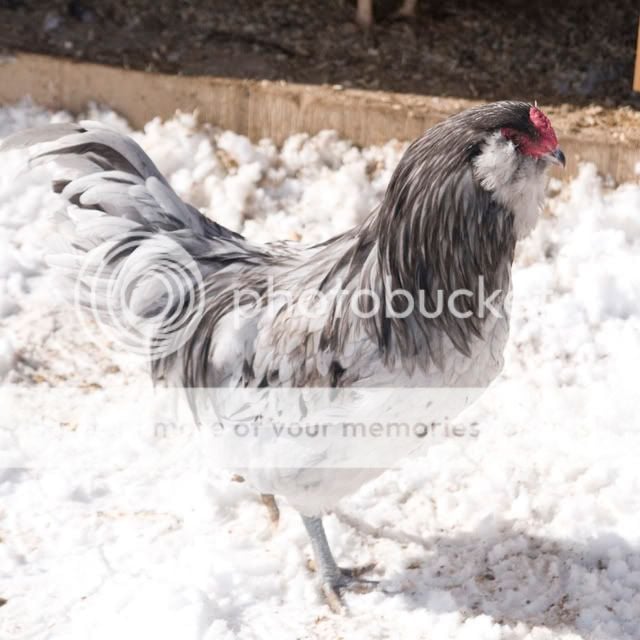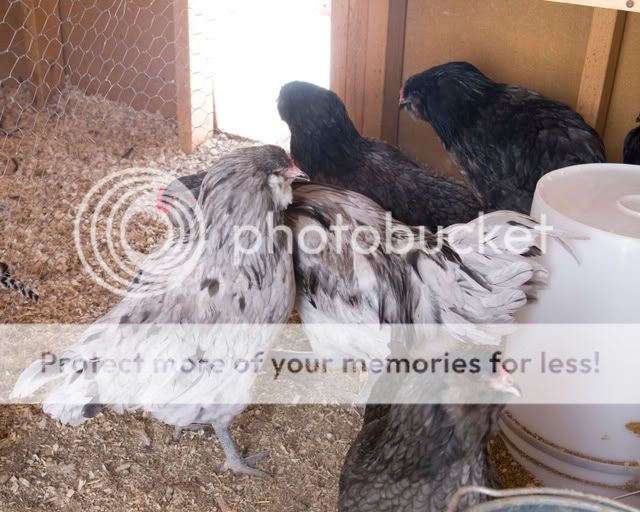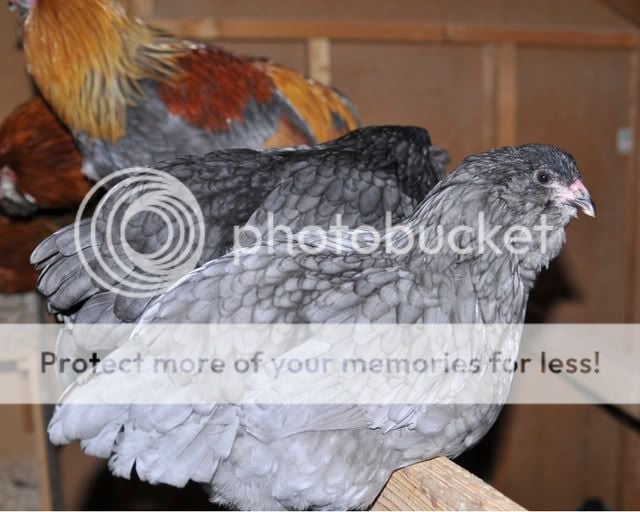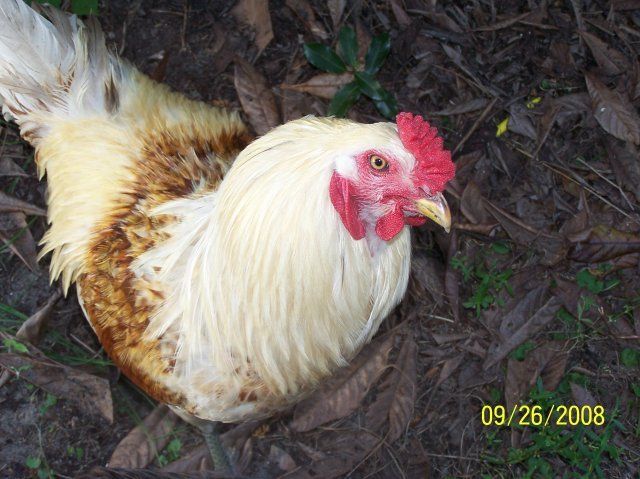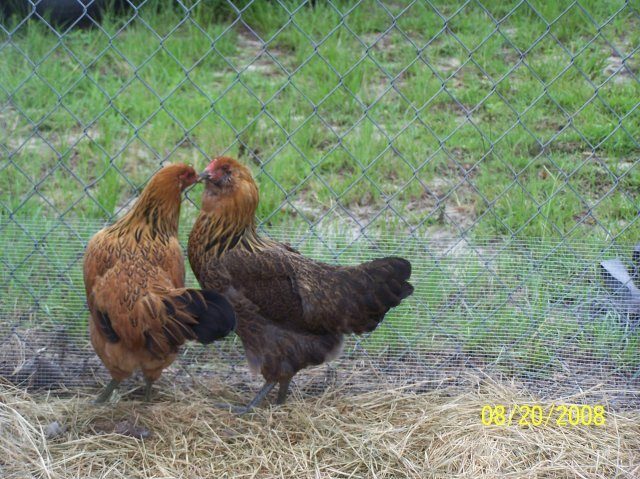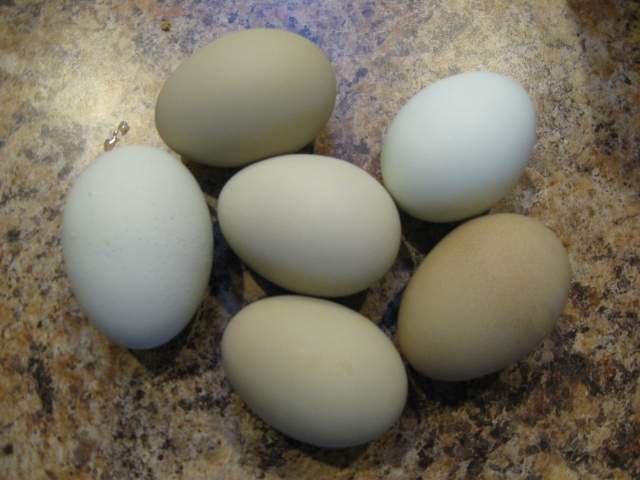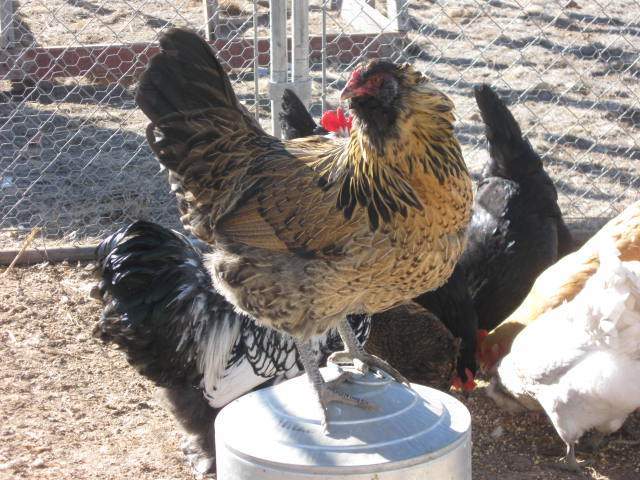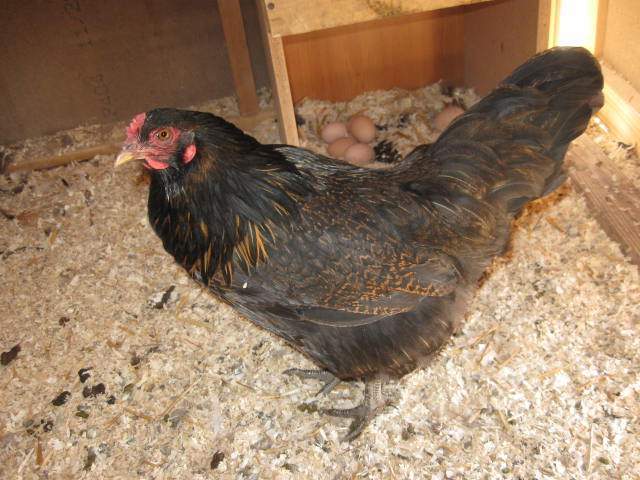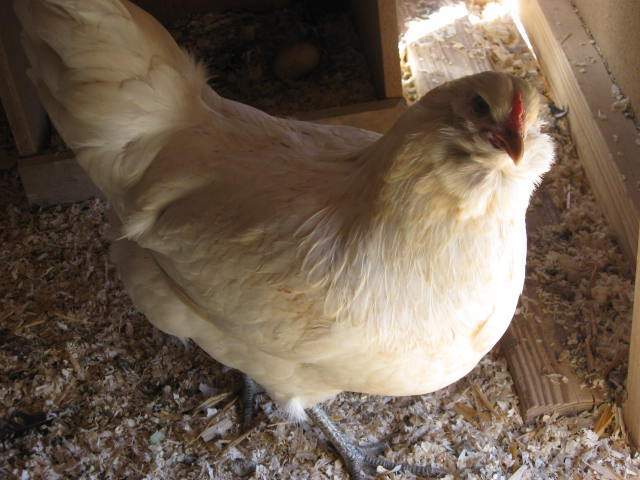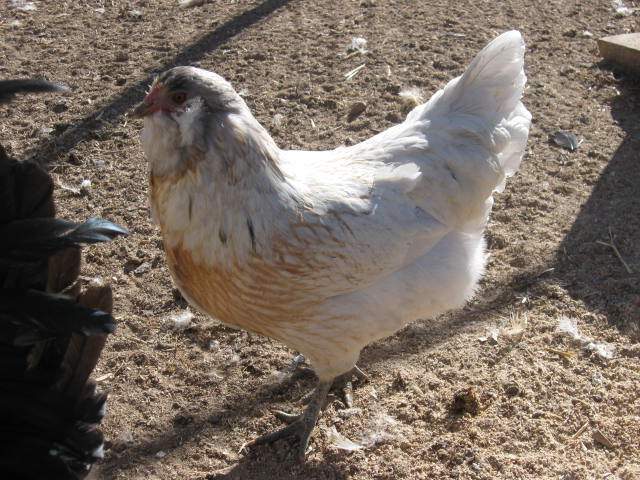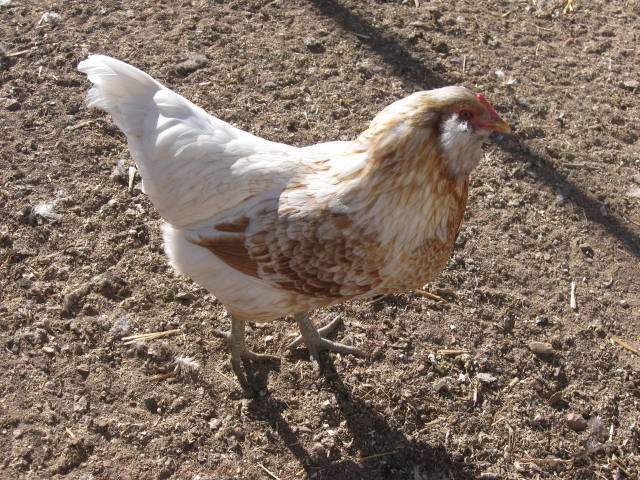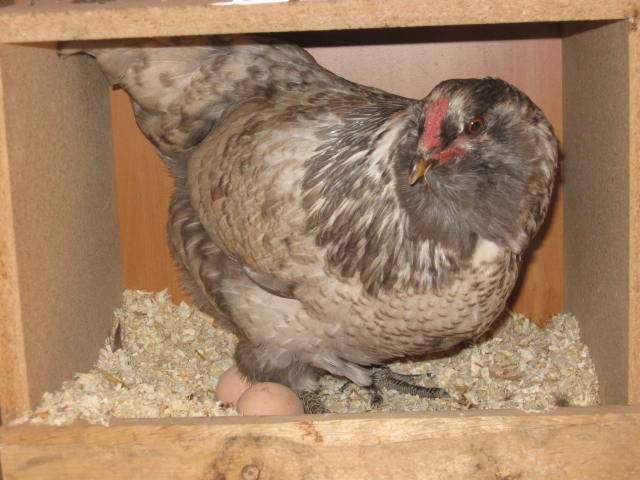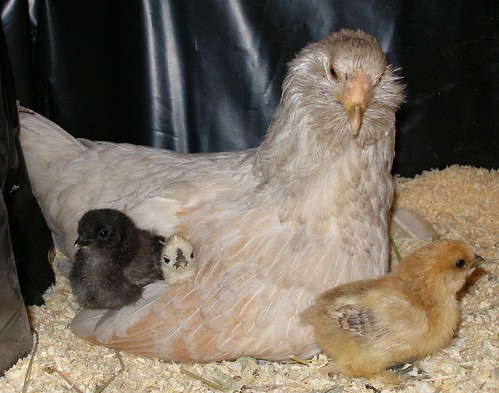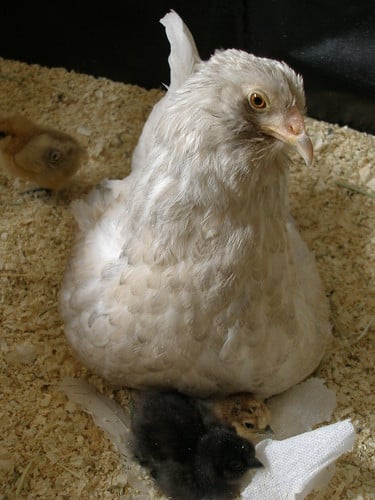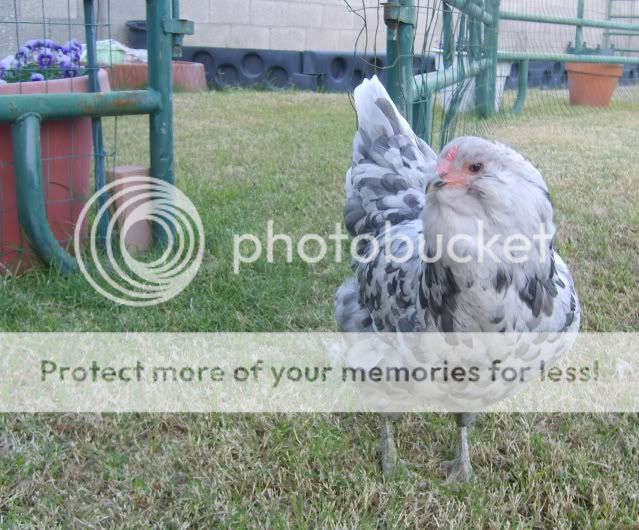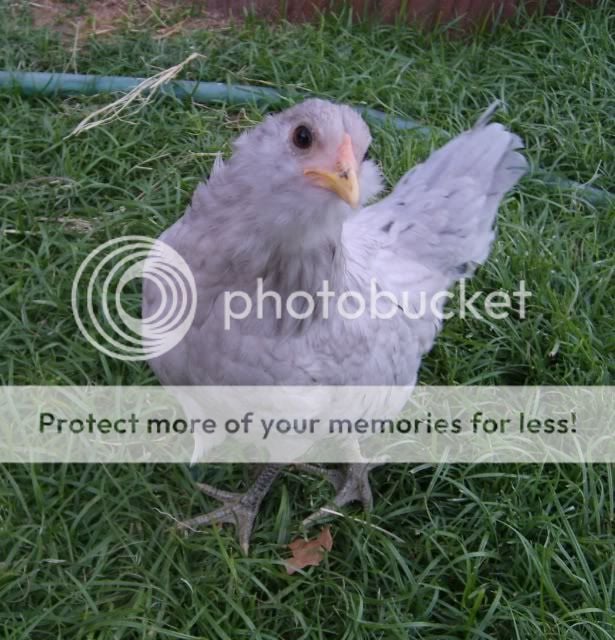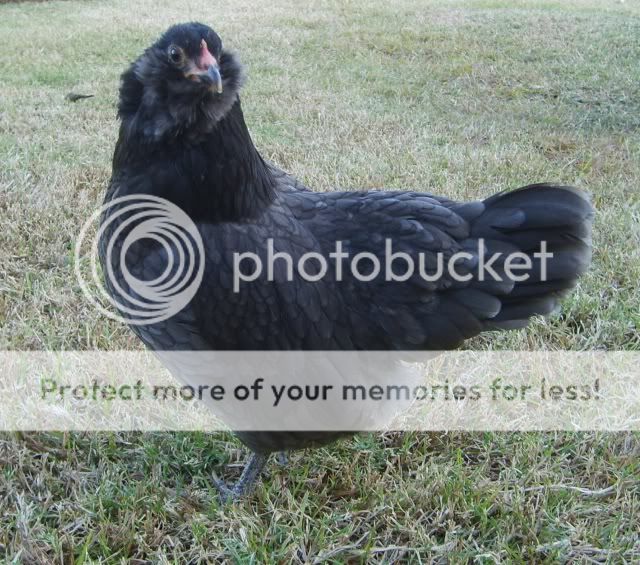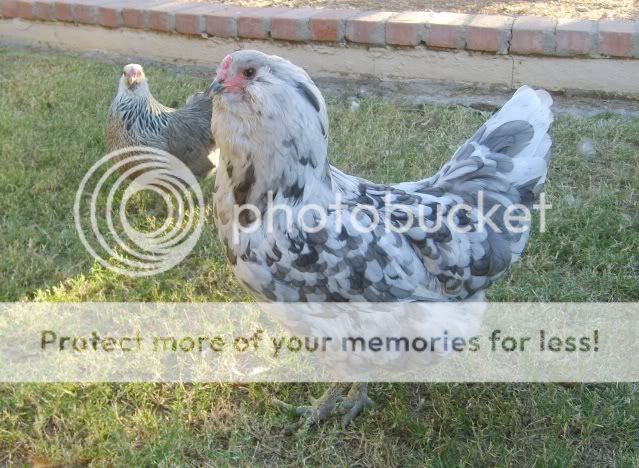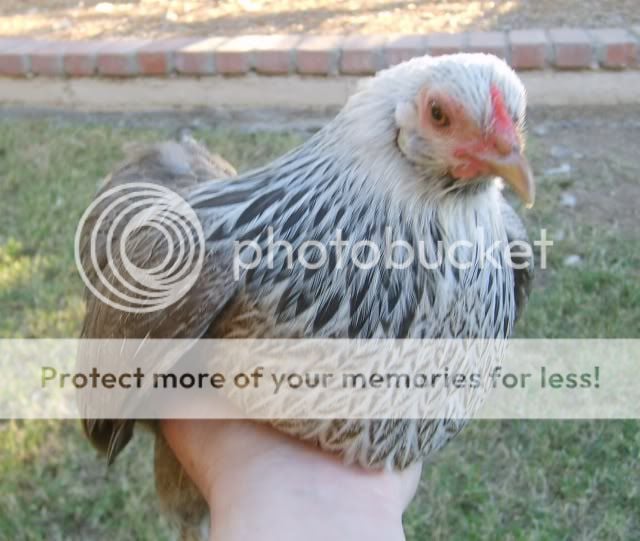Summarizing a confusing and often misunderstood topic-
Two are A.P.A. recognized breeds , EE are a mix of any breeds.
Pls show yours off and post pics of birds/eggs to help people.
Both types are birds are beautiful, friendly, and a delight to have but people seem confused with the facts.
Ameraucana:Ameraucana Breeders Club for info and pictures
Ameraucanas are not that common and should be purchased from Breeders
Breed info:meets APA's Standard of Perfection for breed and breeds true
Color Varieties:Black, Blue, Blue Wheaten, Brown Red, Buff, Silver, Wheaten, and White
Blue and Black may be bred together as may Blue Wheaten and Wheaten. Breedings not of the same variety could result in a nonstandard color for future breedings despite surface appearances and therefore is not a true Ameraucana if it does not breed true.
Comb ea
ea
Wattles:none
Ear Tuffs:none
Eye:Reddish Brown
Earlobe:Red
Features:has muffs and a beard
Beak:horn, natural color
Skin:white
Legs:Slate, bottoms are white, black birds can have black
Eggs ale blue, blue, blue green, and yes, sometimes green
ale blue, blue, blue green, and yes, sometimes green
Easter Egg Layer/EE/Americana
Breed info:not a true breed or APA recognized, mixed breed
can have Ameraucana traits but is not an Ameraucana b/c to be so it must be a recognized variety from standardized color varieties and breed true
EE's are common, from mixed breeding with Ameraucanas and Araucanas and hatcheries
Comb:any-Buttercup, Cushion, Pea, Rose, Single, Strawberry, V-Shaped
Wattles ossible
ossible
Ear Tuffs ossible
ossible
Eye:any
Earlobe:any
Features:can have muffs and a beard
Beak:any
Skin:any
Legs:any or green
Eggs:has blue egg gene, eggs are blue, green, olive green, brown & pink
------------------------------------------------------------------------------------------------------------------------------------------------------------------------------------
An excellent article on the topic written by one of our BYC members-
Ameraucana Myths & Facts
by Vicky Thompson
Much mis-information surrounds these 3 different varieties of poultry:
Araucana
Ameraucana
Easter Egg Layers
It is not uncommon that many people, even experienced poultry fanciers do not realize the differences between these are 3 separate types of poultry.
Lets cover the basic differences...
1. "Easter Egg Layers or Rainbow Layers"...are by far the most common "blue egg layer" sold by most commercial hatcheries, local feed mills, farm supply stores and backyard breeders. This type of chicken is commonly referred to as an "Araucana" or "Americana/Araucana" but the fact is these chickens are neither a purebred Araucana or an Ameraucana but they are a mixed-breed/mongrel variety. Some hatcheries are starting to refer to them as "Easter Egg Layers" or "Rainbow Layers" but many people and hatcheries still erroneously call them "Americanas" (often seen mis-spelling of Ameraucana) or "Araucanas".
Easter Egg Layers typically lay an olive or khaki green egg or a pale beige egg sometimes referred to as "pink", but many lay pastel blue or green eggs as well, but this does not mean they are an Ameraucana. Although they come in countless different colors and patterns they often resemble Ameraucanas with similar feather color and patterns. Some, but not all Easter Egg Layers sport muffs and/or beards but there is usually no consistency in type or coloring since they are a mixed breed and do not breed true to type. They often have a variety of comb styles and wattles. They may also have yellow beaks and yellow or "willow" (greenish-yellow) shanks and feet and this along with the light to dark green egg shell color may indicate they carry a brown egg breed genetics. These chickens are very popular and make nice backyard layers but they definitely are not an A.P.A. recognized breed nor do they breed true.
2. "Araucana"
Araucana's are not that common in the United States . While the A.P.A. claims some Araucanas originated in South America those described in the A.P.A. standard were developed in the US. They are a blue egg laying, "rumpless" (no tail) bird that sport ear tufts, clumps of feathers growing at or near their ear openings and no muff or beard. Despite their somewhat small numbers in the US it is their name that is most frequently and erroneously used in reference to Easter Egg Layers and Ameraucanas. You can see pictures of Araucana's on The Feathersite.
3. "Ameraucana"
While they also have some South America ancestors, Ameraucanas were also developed in the United States and have been recognized by the American Poultry Association since 1984.
Currently the APA only recognizes these 8 specific colors:
black
blue
buff
white
silver
brown-red
wheaten
blue wheaten
Ameraucanas have a pea-combs, a lack of prominent wattles, "bay" colored eyes (reddish brown), red ear lobes and "slate" (blue colored) shanks (blacks can have black colored shanks and feet) and feet and the bottoms of their feet are white. They have "horn" (neutral and not yellow) colored beaks. They lay various shades of pastel blue to blue-green eggs. They have white, not yellow skin.
With their pea combs and lack of wattles they are very cold hardy. They are mostly non-aggressive and easy to handle birds. They come in both standard (large fowl) and bantam size.
You can see photographs of Ameraucanas on the Feathersite or on the Ameraucana Breeders Club website.
Additional Notes:
Caution should be exercised when purchasing what some hatcheries, online auction sellers or breeders are claiming to be "purebred Ameraucanas". Unfortunately many breeders and hatcheries still aren't breeding according to the APA Ameraucana standard and have off colored plumage, beaks and shanks, single combs, missing muffs and/or beards and so on. These people are not necessarily being deceptive, rather uneducated about the breed. On the other hand some hatcheries have been enlightened by ABC members but apparently seem indifferent about the false advertising and continue to sell their birds under an erroneous and misleading name.
Caveat Emptor! Buyer Beware!
Always ask a lot of questions BEFORE you buy.
Refer back to the Ameraucana description provided here to verify the correct type and coloring which may help in determining whether sources have real Ameraucanas or not.
It is advisable to buy from an experienced breeder that is a member of the Ameraucana Breeders Club.
It should also be noted that Ameraucana's do not lay white, "pink"/beige, brown, olive,/khaki green or dark greenish brown or tan eggs but rather varying shades of pastel blue or blue-green eggs.
"Copyright 2002 by Vicky Thompson"
Two are A.P.A. recognized breeds , EE are a mix of any breeds.
Pls show yours off and post pics of birds/eggs to help people.
Both types are birds are beautiful, friendly, and a delight to have but people seem confused with the facts.
Ameraucana:Ameraucana Breeders Club for info and pictures
Ameraucanas are not that common and should be purchased from Breeders
Breed info:meets APA's Standard of Perfection for breed and breeds true
Color Varieties:Black, Blue, Blue Wheaten, Brown Red, Buff, Silver, Wheaten, and White
Blue and Black may be bred together as may Blue Wheaten and Wheaten. Breedings not of the same variety could result in a nonstandard color for future breedings despite surface appearances and therefore is not a true Ameraucana if it does not breed true.
Comb
 ea
eaWattles:none
Ear Tuffs:none
Eye:Reddish Brown
Earlobe:Red
Features:has muffs and a beard
Beak:horn, natural color
Skin:white
Legs:Slate, bottoms are white, black birds can have black
Eggs
 ale blue, blue, blue green, and yes, sometimes green
ale blue, blue, blue green, and yes, sometimes greenEaster Egg Layer/EE/Americana
Breed info:not a true breed or APA recognized, mixed breed
can have Ameraucana traits but is not an Ameraucana b/c to be so it must be a recognized variety from standardized color varieties and breed true
EE's are common, from mixed breeding with Ameraucanas and Araucanas and hatcheries
Comb:any-Buttercup, Cushion, Pea, Rose, Single, Strawberry, V-Shaped
Wattles
 ossible
ossibleEar Tuffs
 ossible
ossibleEye:any
Earlobe:any
Features:can have muffs and a beard
Beak:any
Skin:any
Legs:any or green
Eggs:has blue egg gene, eggs are blue, green, olive green, brown & pink
------------------------------------------------------------------------------------------------------------------------------------------------------------------------------------
An excellent article on the topic written by one of our BYC members-
Ameraucana Myths & Facts
by Vicky Thompson
Much mis-information surrounds these 3 different varieties of poultry:
Araucana
Ameraucana
Easter Egg Layers
It is not uncommon that many people, even experienced poultry fanciers do not realize the differences between these are 3 separate types of poultry.
Lets cover the basic differences...
1. "Easter Egg Layers or Rainbow Layers"...are by far the most common "blue egg layer" sold by most commercial hatcheries, local feed mills, farm supply stores and backyard breeders. This type of chicken is commonly referred to as an "Araucana" or "Americana/Araucana" but the fact is these chickens are neither a purebred Araucana or an Ameraucana but they are a mixed-breed/mongrel variety. Some hatcheries are starting to refer to them as "Easter Egg Layers" or "Rainbow Layers" but many people and hatcheries still erroneously call them "Americanas" (often seen mis-spelling of Ameraucana) or "Araucanas".
Easter Egg Layers typically lay an olive or khaki green egg or a pale beige egg sometimes referred to as "pink", but many lay pastel blue or green eggs as well, but this does not mean they are an Ameraucana. Although they come in countless different colors and patterns they often resemble Ameraucanas with similar feather color and patterns. Some, but not all Easter Egg Layers sport muffs and/or beards but there is usually no consistency in type or coloring since they are a mixed breed and do not breed true to type. They often have a variety of comb styles and wattles. They may also have yellow beaks and yellow or "willow" (greenish-yellow) shanks and feet and this along with the light to dark green egg shell color may indicate they carry a brown egg breed genetics. These chickens are very popular and make nice backyard layers but they definitely are not an A.P.A. recognized breed nor do they breed true.
2. "Araucana"
Araucana's are not that common in the United States . While the A.P.A. claims some Araucanas originated in South America those described in the A.P.A. standard were developed in the US. They are a blue egg laying, "rumpless" (no tail) bird that sport ear tufts, clumps of feathers growing at or near their ear openings and no muff or beard. Despite their somewhat small numbers in the US it is their name that is most frequently and erroneously used in reference to Easter Egg Layers and Ameraucanas. You can see pictures of Araucana's on The Feathersite.
3. "Ameraucana"
While they also have some South America ancestors, Ameraucanas were also developed in the United States and have been recognized by the American Poultry Association since 1984.
Currently the APA only recognizes these 8 specific colors:
black
blue
buff
white
silver
brown-red
wheaten
blue wheaten
Ameraucanas have a pea-combs, a lack of prominent wattles, "bay" colored eyes (reddish brown), red ear lobes and "slate" (blue colored) shanks (blacks can have black colored shanks and feet) and feet and the bottoms of their feet are white. They have "horn" (neutral and not yellow) colored beaks. They lay various shades of pastel blue to blue-green eggs. They have white, not yellow skin.
With their pea combs and lack of wattles they are very cold hardy. They are mostly non-aggressive and easy to handle birds. They come in both standard (large fowl) and bantam size.
You can see photographs of Ameraucanas on the Feathersite or on the Ameraucana Breeders Club website.
Additional Notes:
Caution should be exercised when purchasing what some hatcheries, online auction sellers or breeders are claiming to be "purebred Ameraucanas". Unfortunately many breeders and hatcheries still aren't breeding according to the APA Ameraucana standard and have off colored plumage, beaks and shanks, single combs, missing muffs and/or beards and so on. These people are not necessarily being deceptive, rather uneducated about the breed. On the other hand some hatcheries have been enlightened by ABC members but apparently seem indifferent about the false advertising and continue to sell their birds under an erroneous and misleading name.
Caveat Emptor! Buyer Beware!
Always ask a lot of questions BEFORE you buy.
Refer back to the Ameraucana description provided here to verify the correct type and coloring which may help in determining whether sources have real Ameraucanas or not.
It is advisable to buy from an experienced breeder that is a member of the Ameraucana Breeders Club.
It should also be noted that Ameraucana's do not lay white, "pink"/beige, brown, olive,/khaki green or dark greenish brown or tan eggs but rather varying shades of pastel blue or blue-green eggs.
"Copyright 2002 by Vicky Thompson"
Last edited:




